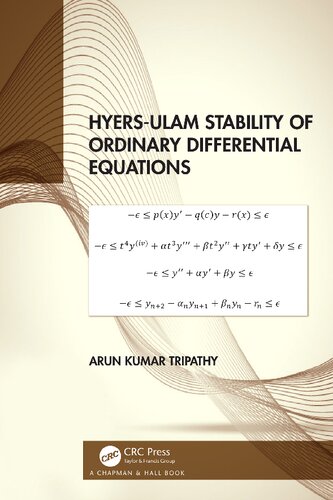

Most ebook files are in PDF format, so you can easily read them using various software such as Foxit Reader or directly on the Google Chrome browser.
Some ebook files are released by publishers in other formats such as .awz, .mobi, .epub, .fb2, etc. You may need to install specific software to read these formats on mobile/PC, such as Calibre.
Please read the tutorial at this link: https://ebookbell.com/faq
We offer FREE conversion to the popular formats you request; however, this may take some time. Therefore, right after payment, please email us, and we will try to provide the service as quickly as possible.
For some exceptional file formats or broken links (if any), please refrain from opening any disputes. Instead, email us first, and we will try to assist within a maximum of 6 hours.
EbookBell Team

5.0
20 reviewsHyers-Ulam Stability of Ordinary Differential Equations undertakes an interdisciplinary, integrative overview of a kind of stability problem unlike the existing so called stability problem for Differential equations and Difference Equations. In 1940, S. M. Ulam posed the problem: When can we assert that approximate solution of a functional equation can be approximated by a solution of the corresponding equation before the audience at the University of Wisconsin which was first answered by D. H. Hyers on Banach space in 1941. Thereafter, T. Aoki, D. H. Bourgin and Th. M. Rassias improved the result of Hyers. After that many researchers have extended the Ulam's stability problems to other functional equations and generalized Hyer's result in various directions. Last three decades, this topic is very well known as Hyers-Ulam Stability or sometimes it is referred Hyers-Ulam-Rassias Stability. This book synthesizes interdisciplinary theory, definitions and examples of Ordinary Differential and Difference Equations dealing with stability problems.
The purpose of this book is to display the new kind of stability problem to global audience and accessible to a broader interdisciplinary readership for e.g those are working in Mathematical Biology Modeling, bending beam problems of mechanical engineering also, some kind of models in population dynamics. This book may be a starting point for those associated in such research and covers the methods needed to explore the analysis.
Features: